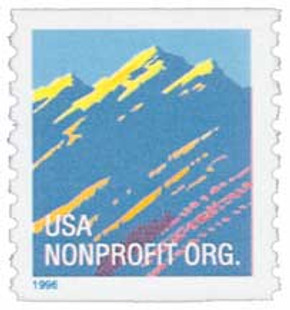
U.S. #3875
2004 5¢ Sea Coast
American Scenes
Issue Date: June 11, 2004
City: Washington, DC
Quantity: 400,000,000
Printed By: American Packaging Corporation for Sennett Security Products
Printing Method: Photogravure
Perforations: Serpentine die cut 11 ½ vertically
Col... more
U.S. #3875
2004 5¢ Sea Coast
American Scenes
Issue Date: June 11, 2004
City: Washington, DC
Quantity: 400,000,000
Printed By: American Packaging Corporation for Sennett Security Products
Printing Method: Photogravure
Perforations: Serpentine die cut 11 ½ vertically
Color: Multicolored
These Sea Coast self-adhesive coil stamps were both issued in 2004, but one has the date “2003” printed on it and the other “2004.” This design is part of the American Scenes Series.
Cumberland Island National Seashore
On October 23, 1972, Cumberland Island National Seashore was officially established in Georgia. Cumberland Island is the largest sea island in the southeastern United States and the most biodiverse of Georgia’s barrier islands.
Native Americans inhabited Cumberland Island at least as far back as 2000 BC. In the 16th century, Spanish missionaries began arriving on Cumberland Island and called it San Pedro. They built a garrison and the San Pedro de Mocama mission there in 1603. A second mission, San Phelipe, was moved to the island in 1670. Attacks by French and later Spanish pirates eventually resulted in all inhabitants leaving the island.
British general James Edward Oglethorpe arrived on Cumberland Island in 1733. He renamed the island after Prince William Augustus, Duke of Cumberland. General Oglethorpe built a hunting lodge named Dungeness and two forts (Fort William and Fort St. Andrews) on either end of the island. When the British won the Battle of Bloody Marsh in 1742, their colonies no longer needed protection from the Spanish in Florida and the two forts were abandoned. From the 1760s to around 1774, the island remained nearly empty.
In 1783, Revolutionary War legend Nathanael Greene was given much of Cumberland Island as repayment for his service. When Greene died in 1786, his wife remarried Phineas Miller and built a four-story mansion ten years later. She named the mansion Dungeness, after Oglethorpe’s hunting lodge. The home burned to the ground in 1866.
Another Dungeness was built in the 1880s by Thomas Carnegie and his wife Lucy. The third Dungeness was lived in until the 1929 Stock Market Crash and the beginning of the Great Depression. The modern-day ruins on Cumberland Island are of the Carnegie Dungeness which burned down in 1959. At one time, the Carnegie family owned 90 percent of Cumberland Island and soon sought to preserve it. So they invited the National Park Service to visit and assess the island as a possible national park. The NPS agreed it should be a park, but didn’t make an offer right away.
Meanwhile, Georgia sought to make the island a state park, while other parts of the island were in danger of being sold to real estate developers. Land use became a topic of debate when mining companies and hunters heard of the plans, but withdrew most of their concerns when the National Park Service said that some hunting or mining might be allowed within a National Seashore. However, convincing non-Carnegie landowners on Cumberland Island to get behind the bill was a more difficult matter. With the help of local organizations such as the Sierra Club, the National Park Service eventually came to an agreement with landowners.
Between fighting for support from land owners, Camden County officials, congressman Williamson S. Stuckey, environmental activists, the State of Georgia, Congress, and even the president of the United States, it took the NPS longer than expected to reach their goal. The state government gave its support in 1969, with most land owners following shortly after. Camden County, Georgia, was swayed when University of Georgia researchers estimated visitors to Cumberland Island Seashore would spend around $70 million dollars in Camden and nearby counties in the first 15 years of operation. Congressman Stuckey reintroduced his Cumberland Island Seashore bill and it was officially signed into law by President Richard Nixon on October 23, 1972, after nearly two decades of negotiation.
Having experienced very little development over the years, Cumberland Island has remained fairly wild. It includes 18 miles of the most valuable loggerhead sea turtle nesting sites in Georgia and hosts many different species of shorebirds, wading birds, raptors, and other waterfowl. However, some non-native species, including feral pigs, threaten its native plants and animals. National Park Service personnel monitor these species as part of the park’s mission to ensure a natural balance is maintained on the island.
Less

Most Orders Ship
within 1 Business Day
90 Day Return Policy
Satisfaction Guaranteed
Earn Reward Points
for FREE Stamps & More











